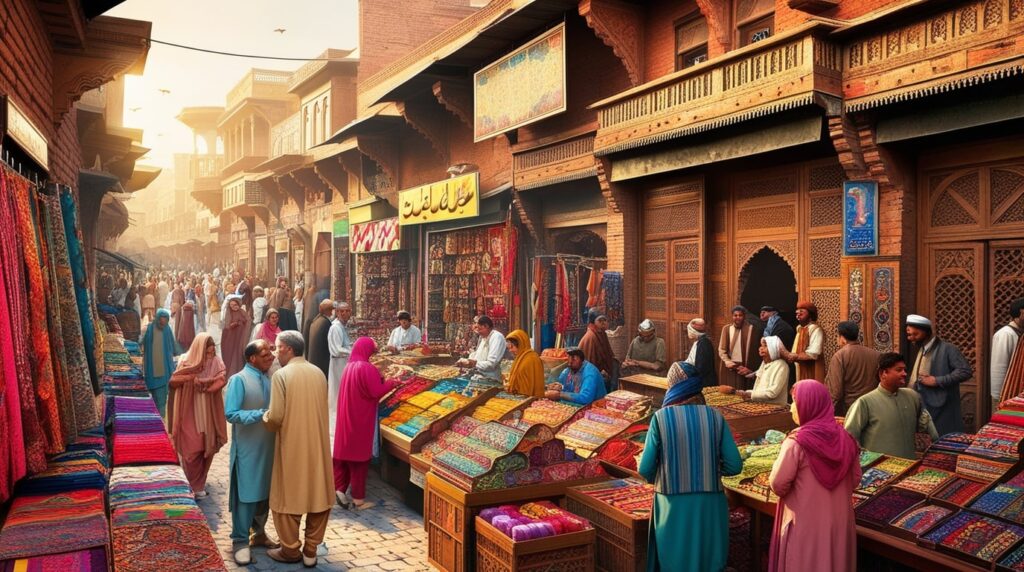Grocery shopping in Pakistan has undergone a remarkable transformation over the past few decades. From the bustling street markets and local kiryana stores to the rise of modern supermarkets and online grocery platforms, consumer behavior has evolved significantly. This shift is driven by various factors, including technological advancements, changing lifestyles, and the convenience offered by e-commerce. In this article, we explore the evolution of grocery shopping in Pakistan, tracing its journey from traditional markets to digital platforms.
Traditional Grocery Shopping in Pakistan
The Role of Bazaars and Kiryana Stores
Historically, grocery shopping in Pakistan revolved around traditional marketplaces, commonly known as bazaars. These markets have been the backbone of daily trade, offering a wide range of fresh produce, spices, grains, and household essentials. Local kiryana stores, small neighborhood shops, have been the primary source of daily grocery items for generations.
Bazaars, such as Lahore’s Anarkali and Karachi’s Empress Market, have served as hubs of trade and commerce for decades. These markets not only provide groceries but also facilitate social interactions, where buyers and sellers negotiate prices and exchange information about products.

The Advantages of Traditional Markets
- Fresh Produce – Consumers have direct access to fresh fruits, vegetables, and meat, often sourced from local farms.
- Personalized Experience – Shopkeepers build strong relationships with customers, offering credit facilities and personalized service.
- Affordability – Prices are generally lower than in supermarkets, with room for bargaining.
- Cultural Significance – Traditional markets hold historical and cultural value, forming an essential part of local communities.
The Emergence of Supermarkets
Introduction of Superstores
During the late 1990s and early 2000s, Pakistan witnessed the emergence of modern supermarkets and hypermarkets, offering a structured and convenient shopping experience. Retail chains like Metro Cash & Carry, Carrefour, and Imtiaz Super Market revolutionized the grocery shopping culture by introducing self-service shopping, imported goods, and competitive pricing.
Factors Driving the Growth of Supermarkets
- Urbanization – With increasing urban migration, the demand for organized retail spaces grew.
- Economic Growth – Rising disposable incomes enabled consumers to explore new shopping experiences.
- Quality Assurance – Supermarkets ensured better quality control, hygiene, and standard pricing.
- One-Stop Shopping – Offering groceries, household items, electronics, and clothing under one roof attracted middle-class families.
While supermarkets brought a more organized shopping structure, they were primarily limited to metropolitan cities like Karachi, Lahore, and Islamabad, leaving rural areas reliant on traditional markets.
The Digital Revolution: Online Grocery Shopping
Rise of E-commerce in Pakistan
With the advent of smartphones and high-speed internet, Pakistan’s e-commerce sector has flourished. Online grocery platforms have emerged as a convenient alternative to physical stores, catering to busy urban consumers.
Platforms such as GrocerApp, Daraz Mart, PapaFoody, Airlift Express (before its closure), and Pandamart have gained popularity by offering doorstep delivery services, discounts, and a wide variety of products.
Key Drivers of Online Grocery Shopping
- Convenience – Consumers can order groceries from the comfort of their homes, avoiding traffic and long queues.
- Time-Saving – Busy professionals and families prefer online shopping to save time and effort.
- Diverse Product Range – Online stores offer local and imported products that might not be available in nearby markets.
- Discounts and Promotions – E-commerce platforms frequently provide attractive deals and discounts.
- COVID-19 Impact – The pandemic significantly boosted online grocery shopping due to safety concerns and movement restrictions.
Challenges and Opportunities in Online Grocery Shopping
Challenges
Despite the growth of online grocery shopping, several challenges persist:
- Trust Issues – Many consumers are hesitant to rely on digital platforms due to concerns about product quality and reliability.
- Logistics and Delivery Delays – Ensuring timely delivery, especially in remote areas, remains a challenge.
- Limited Digital Literacy – A significant portion of the population is not tech-savvy enough to navigate online shopping apps.
- Payment Barriers – Many people prefer cash transactions, while digital payment adoption is still evolving.
Opportunities
- Expansion into Rural Areas – Bridging the digital divide and expanding delivery networks can increase market reach.
- Improved Customer Experience – Enhancing customer support and return policies can build consumer trust.
- AI and Data Analytics – Using technology to analyze shopping patterns can help businesses personalize offerings.
- Partnerships with Local Vendors – Collaborating with small retailers can create a hybrid model, combining the best of traditional and digital shopping.
Future of Grocery Shopping in Pakistan
As technology continues to evolve, the future of grocery shopping in Pakistan is expected to be a blend of traditional and digital experiences. Some key trends that may shape the industry include:
- Integration of AI and Automation – AI-powered chatbots and automated warehouses will enhance efficiency.
- Increased Mobile Commerce – With affordable smartphones, more consumers will shift to mobile grocery shopping.
- Sustainable Shopping Trends – Eco-friendly packaging and locally sourced products will gain traction.
- Hyperlocal Delivery Models – Faster delivery times through neighborhood fulfillment centers will improve service efficiency.
Conclusion
The evolution of grocery shopping in Pakistan reflects a dynamic shift from traditional markets to digital convenience. While traditional bazaars and kiryana stores continue to serve a significant portion of the population, supermarkets and online grocery platforms are reshaping consumer habits. With ongoing technological advancements and changing consumer preferences, Pakistan’s grocery industry is set to witness even more innovation in the coming years. The key to success lies in striking a balance between traditional shopping values and modern e-commerce efficiency, ensuring a seamless and reliable shopping experience for all consumers.